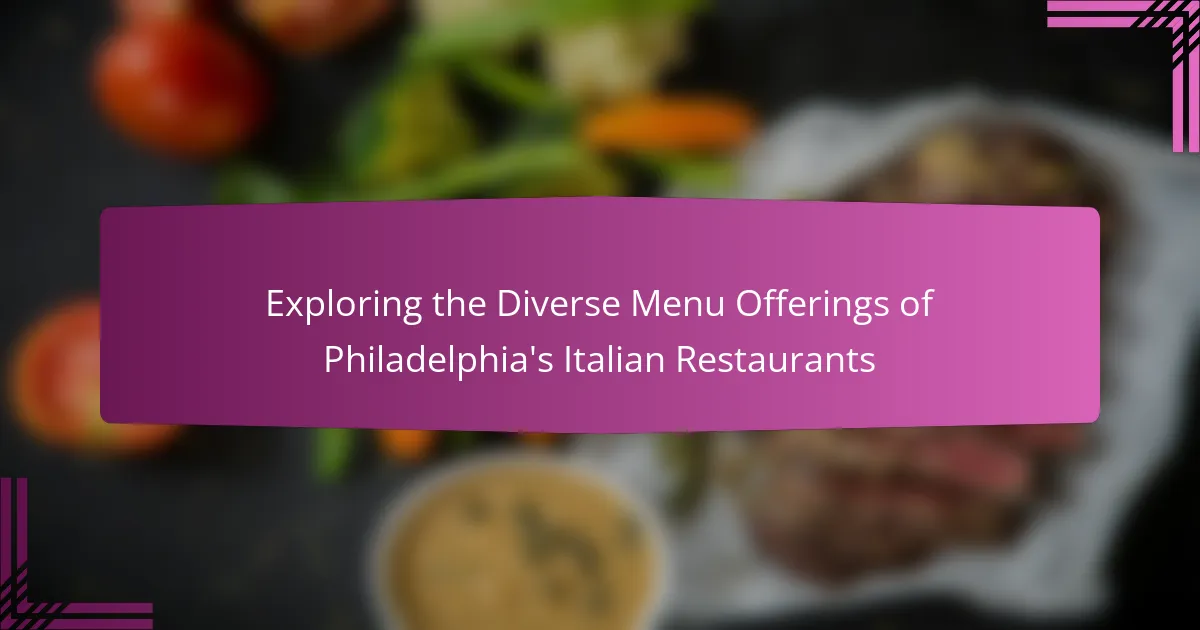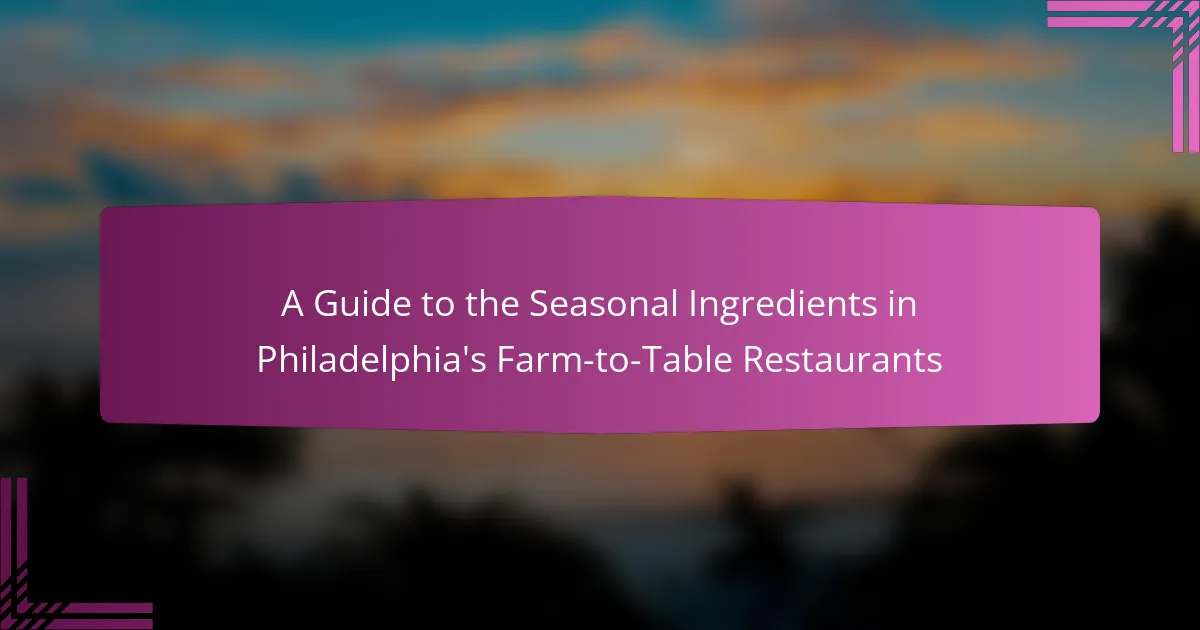![]()
What are the Signature Dishes of Philadelphia’s Iconic Cheesesteak Shops?
The signature dishes of Philadelphia’s iconic cheesesteak shops include the classic cheesesteak, the chicken cheesesteak, and the hoagie. The classic cheesesteak features thinly sliced ribeye steak topped with melted cheese, often Cheez Whiz, served on a hoagie roll. The chicken cheesesteak substitutes ribeye with grilled or fried chicken, maintaining the same cheese options. Hoagies, while not a cheesesteak, are popular in these shops and consist of various meats, cheeses, and fresh vegetables. Popular shops like Pat’s and Geno’s are known for their unique takes on these dishes, drawing locals and tourists alike. The combination of fresh ingredients and traditional preparation methods contributes to their iconic status in Philadelphia’s culinary scene.
How did the cheesesteak become a cultural icon in Philadelphia?
The cheesesteak became a cultural icon in Philadelphia due to its unique flavor and historical significance. It originated in the 1930s when Pat Olivieri created the sandwich from grilled beef and onions. The sandwich gained popularity among local workers and quickly became a staple. By the 1960s, it was widely recognized as a Philadelphia specialty. The cheesesteak’s prominence was further solidified by iconic shops like Pat’s and Geno’s, which became tourist destinations. Additionally, its representation in popular culture, including films and television, contributed to its status. The cheesesteak is now synonymous with Philadelphia’s culinary identity.
What historical events contributed to the popularity of cheesesteaks?
The popularity of cheesesteaks grew significantly due to several historical events. The creation of the cheesesteak is attributed to Pat Olivieri in the 1930s. He first made the sandwich in Philadelphia, using leftover beef and onions. The dish gained recognition when taxi drivers began requesting it. The post-World War II era saw an increase in the sandwich’s popularity, as returning soldiers sought comfort food. The establishment of iconic shops like Pat’s and Geno’s further solidified its status. Additionally, the rise of the Philadelphia Eagles and Phillies in the 1980s boosted local food culture, including cheesesteaks. Events like the annual cheesesteak festival also celebrate and promote this iconic dish. These historical moments contributed to the cheesesteak’s reputation as a Philadelphia staple.
How do local ingredients influence cheesesteak recipes?
Local ingredients significantly influence cheesesteak recipes by enhancing flavor and authenticity. In Philadelphia, local providers supply fresh meats and cheeses, which are critical to the dish’s quality. For instance, using locally sourced ribeye steak ensures optimal tenderness and taste. Additionally, the use of regional cheeses, like provolone or Cheez Whiz, contributes to the cheesesteak’s signature flavor profile. Local bread, such as Amoroso rolls, is essential for texture and structure. These ingredients reflect Philadelphia’s culinary traditions and regional preferences. The combination of local ingredients creates variations that cater to different tastes while maintaining the core identity of the cheesesteak.
What defines a signature cheesesteak dish?
A signature cheesesteak dish is defined by its specific ingredients and preparation style. The primary components include thinly sliced beef, typically ribeye or sirloin. The meat is cooked on a griddle and often topped with melted cheese. Common cheese choices are Cheez Whiz, provolone, or American cheese. The sandwich is served in a long, soft hoagie roll. Additionally, toppings like sautéed onions, peppers, or mushrooms may be included. The combination of these elements creates a distinctive flavor profile. Philadelphia is renowned for its cheesesteaks, with many shops claiming unique variations. The dish has historical significance, originating in the city in the 1930s.
What are the key ingredients in a classic cheesesteak?
The key ingredients in a classic cheesesteak are thinly sliced beef, cheese, and a hoagie roll. The beef is typically ribeye or sirloin, known for its tenderness and flavor. Cheese options often include Cheez Whiz, provolone, or American cheese. The hoagie roll is essential for holding the ingredients together. These components create the signature taste of a cheesesteak. The combination of savory beef and melted cheese on a soft roll is iconic in Philadelphia cuisine.
How do preparation methods vary across different shops?
Preparation methods for cheesesteaks vary significantly across different shops. Some shops use thinly sliced ribeye steak, while others may opt for sirloin or a blend of meats. Cooking techniques also differ; some shops grill the meat on a flat-top, while others use a charcoal grill for added flavor. The way the cheese is incorporated varies as well. Some shops melt cheese directly onto the meat, while others add it afterward. Additionally, the bread used can differ; some shops prefer a softer roll, while others use a crustier option. Seasoning techniques also vary, with some shops using simple salt and pepper, while others incorporate proprietary spice blends. This diversity in preparation methods contributes to the unique flavor profiles of cheesesteaks across Philadelphia’s iconic shops.
Why are certain shops renowned for their cheesesteak dishes?
Certain shops are renowned for their cheesesteak dishes due to their unique recipes and quality ingredients. These shops often use high-quality beef, freshly baked bread, and special cheese blends. Their cooking techniques, such as grilling the meat to perfection, also contribute to the flavor. Additionally, some shops have a long-standing history and tradition in Philadelphia, attracting loyal customers. For example, Pat’s King of Steaks and Geno’s Steaks have been serving cheesesteaks since the 1930s. Their iconic status is reinforced by local and national media coverage. Many food critics and publications consistently rank these shops among the best for cheesesteaks. This reputation creates a strong draw for both locals and tourists seeking an authentic experience.
What unique attributes set these shops apart?
Unique attributes that set Philadelphia’s iconic cheesesteak shops apart include their signature toppings, bread selection, and preparation methods. Each shop often offers distinct cheese options, such as Cheez Whiz or provolone. The bread used is typically a specific type of hoagie roll, which varies by shop. Some shops have unique cooking techniques, like grilling steak to achieve a specific texture. Customer service and shop ambiance also play a role in their uniqueness. Many shops have a long-standing history, contributing to their local reputation. For example, Pat’s and Geno’s have been rivals since the 1930s, creating a cultural phenomenon. These factors collectively create a unique experience for customers.
How do customer reviews and experiences shape a shop’s reputation?
Customer reviews and experiences significantly shape a shop’s reputation. Positive reviews enhance credibility and attract new customers. They serve as social proof, influencing potential buyers’ decisions. Negative reviews can deter customers and damage a shop’s image. According to a 2020 survey by BrightLocal, 87% of consumers read online reviews for local businesses. Shops with a higher volume of positive feedback often rank better in search results. This visibility increases foot traffic and sales. Therefore, customer feedback directly impacts a shop’s success and longevity.
How do the signature dishes differ from shop to shop?
Signature dishes differ from shop to shop primarily in ingredient selection and preparation methods. Each cheesesteak shop in Philadelphia has its unique recipe and style. For instance, some shops use ribeye steak, while others might opt for sirloin or chicken. The choice of cheese also varies; popular options include Cheez Whiz, provolone, and American cheese.
Furthermore, the way the steak is cooked can influence flavor and texture. Some shops grill the meat to a crispy finish, while others prefer a softer, juicier result. Toppings and condiments also play a significant role. Shops may offer sautéed onions, peppers, or mushrooms, each adding distinct tastes.
Regional influences and family traditions can further differentiate these dishes. Each shop’s signature dish reflects its history and the chef’s personal touch. This diversity contributes to the rich culinary landscape of Philadelphia’s cheesesteak scene.
What are the most popular variations of cheesesteaks in Philadelphia?
The most popular variations of cheesesteaks in Philadelphia include the classic cheesesteak, the chicken cheesesteak, and the vegetarian cheesesteak. The classic cheesesteak features thinly sliced beef, typically ribeye, topped with melted cheese, often Cheez Whiz or provolone. The chicken cheesesteak substitutes beef with grilled chicken, retaining similar toppings. The vegetarian cheesesteak uses sautéed vegetables, such as mushrooms and peppers, as a meat alternative. These variations cater to diverse tastes while maintaining the essence of the iconic dish.
How do toppings and sauces enhance the cheesesteak experience?
Toppings and sauces significantly enhance the cheesesteak experience by adding flavor, texture, and visual appeal. Common toppings like sautéed onions, peppers, and mushrooms complement the savory meat. They introduce layers of taste that elevate the overall profile of the sandwich. Sauces such as cheese whiz, ketchup, or hot sauce provide moisture and additional flavor dimensions. The combination of these elements creates a more satisfying and enjoyable eating experience. Historical preferences show that variations in toppings reflect regional tastes and individual preferences, contributing to the cheesesteak’s iconic status in Philadelphia’s culinary scene.
What are the best practices for enjoying a cheesesteak?
To enjoy a cheesesteak, choose a high-quality roll. The bread should be fresh and sturdy enough to hold the fillings. Next, select your preferred meat, typically ribeye or sirloin, sliced thinly. Opt for traditional toppings like sautéed onions and cheese, commonly Cheez Whiz, provolone, or American.
When eating, hold the sandwich firmly to prevent spills. Take small bites to savor the flavors and avoid overwhelming yourself. Pair your cheesesteak with a side of fries or a soft drink for a complete meal.
These practices enhance the overall experience and allow you to appreciate the classic Philadelphia dish fully.
How should you choose the right shop for your cheesesteak craving?
To choose the right shop for your cheesesteak craving, consider the following factors. Look for shops that have a strong reputation in the community. Reviews on platforms like Yelp or Google can provide insight into customer satisfaction. Check if the shop uses high-quality ingredients, such as freshly sliced meat and locally sourced bread. Authentic cheesesteaks often feature Cheez Whiz or provolone cheese, so verify their options. Additionally, assess the shop’s menu variety. Some shops offer unique variations that can enhance your experience. Lastly, consider the shop’s location and ambiance. A popular shop might indicate quality but can also lead to long wait times.
What tips can enhance your cheesesteak tasting experience?
To enhance your cheesesteak tasting experience, focus on the quality of ingredients. Freshly sliced steak and high-quality cheese make a significant difference. Choose a reputable shop known for its authenticity. Opt for the classic Cheez Whiz or provolone to complement the meat. Consider adding sautéed onions or peppers for extra flavor. Pay attention to the bread; a fresh, crusty roll is essential. Enjoy the cheesesteak while it’s hot for the best taste. Pair it with a side of fries or a drink to complete the experience.
The main entity of the article is Philadelphia’s iconic cheesesteak shops, which are defined by their signature dishes, including the classic cheesesteak, chicken cheesesteak, and hoagies. The article explores the historical significance of the cheesesteak as a cultural icon, detailing its origins, the influence of local ingredients, and the unique preparation methods that differentiate various shops. It also examines how customer reviews shape a shop’s reputation, the variations in cheesesteak recipes, and best practices for enjoying this quintessential Philadelphia dish. Key attributes such as ingredient quality, cooking techniques, and toppings are highlighted to provide a comprehensive understanding of what makes these cheesesteak shops renowned.


